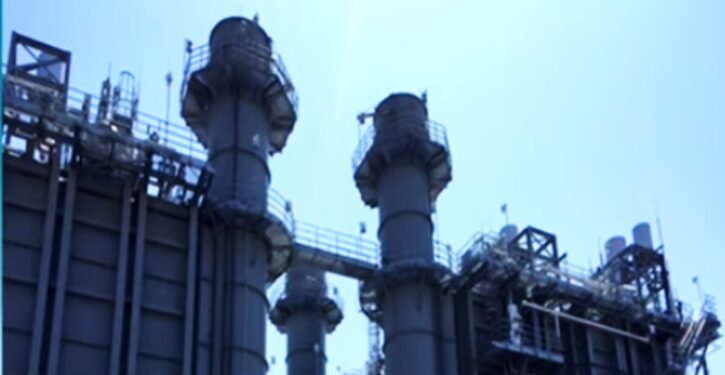
Germany could have produced its own natural gas, rather than relying on Russian gas that suddenly became unavailable this year due to the Ukraine War. But Germany forbade the drilling needed to access its own gas. As a result, it ended up buying Russian gas at a far higher price. Buying Russian gas harmed the environment, because Russian natural gas production emits more methane than German or American gas production does.
In the Wall Street Journal, Mark Ammerman writes,
My firm’s geologists had researched European shale resources. We estimated that, with fracking, Europe had about 700 trillion cubic feet of recoverable natural gas, enough to power the continent for 50 years. I was asked to present this information to the energy-security-policy leadership (Energie Sicherheitsführung) of the German parliament in April 2006.
At the time Germany was already planning to expand its gas pipelines to Russia. That natural gas cost around $17 per million British thermal units, compared with a cost of $3 at home. I asked the leaders to imagine the effects of being able to power their economy from local resources and in that price range. Their faces showed stunned disbelief. As one of their Ph.Ds explained in German, “A Halliburton truck fracking on a German hill? Never never!”
Following the meeting, they budgeted the princely sum of 300,000 euros to study what I had presented, but they decided to stick with the [Russian] pipelines. The Germans can’t say they weren’t warned.
Europe faces a critical shortage of energy this winter. It has a big gas field in the Netherlands that could replace much of the natural gas supply it lost due to Russia’s invasion of Ukraine. But it won’t use that rich gas field and is shutting it down. Instead, Europe is burning more coal — including dirty lignite coal — and even that won’t be enough to fill unmet needs, due to supply bottlenecks. Coal generates much more pollution than natural gas.
The Groningen gas field, located beneath the Dutch marshlands, is Europe’s largest natural gas reserve. It holds enough fuel to replace what Germany once imported from Russia, reported Bloomberg News.
But instead of supporting Europe, as a brutal winter approaches, the field is being shut down, merely because of tremors similar to the tremors that fracking for natural gas produces all the time in states like Oklahoma.
Drilling has caused many tiny earthquakes in the area, and if the Dutch officials keep the gas field open, they are prone to backlash from residents and environmental groups for breaking past promises to stop the drilling. Never mind that Americans put up with such small earthquakes all the time.
Groningen field has been the mainstay of Europe’s gas supplies since the 1960s. Even today, there’s still about 450 billion cubic meters of extractable gas in reserve — worth around $1 trillion. One of the companies involved in operating the field says there’s more capacity to extract around 50 billion cubic meters per year than is currently flowing.
The cut-off of Russian gas has led to countries like Germany relying more heavily on coal, which results in much more air pollution than natural gas. Alexander Bethe, chairman of the Board of the Berlin-based Association of Coal Importers, says reliance on coal to produce electricity will increase: “This winter, we will certainly import over 30 million tonnes (33 million US tons) of hard coal to keep our power stations in operation.”
At least 20 percent of Germany’s power is already being produced using lignite coal, which is worse for the environment than regular coal. Burning lignite produces less energy for the amount of carbon dioxide and sulfur it releases than other types of coal. As a result, it is the most harmful to human health of any type of coal.
When winter strikes Europe, it will need a lot more energy to heat people’s homes and offices. But Russia has cut off a key gas pipeline, leaving Europe with less energy. What is Europe’s plan for dealing with the resulting shortage? Absurdly, many European nations plan to import power from each other, now that they can’t produce enough power of their own.
For example, as a Bloomberg News reporter notes, “France is counting on importing electricity through Oct.-Feb. from European neighbors, including the UK. But the UK power grid is also counting on importing electricity from France this winter.”
How can a nation that is running short of fuel think that its neighbor, which is experiencing the very same continental fuel shortage, will somehow have enough electricity to share and export? It won’t.
France’s forecast is unrealistically optimistic, but France will be able to meet most of its energy needs, because it — unlike other European countries — built a lot of nuclear power plants. Unlike neighboring Germany, which has only 3 remaining nuclear plants (and thus is facing an extreme energy shortage), France has 56 operating nuclear plants. France responded to the Arab oil embargo of the early 1970s by building many nuclear plants to transition away from from fossil fuel: “As a result….France now claims a substantial level of energy independence and an extremely low level of carbon dioxide emissions per capita from electricity generation, since over 80% of its electricity is from nuclear or hydro.” Still, the French will have to reduce energy use, as “energy prices in France and across Europe hit all-time records in late August.”
Russia cut off a gas pipeline to Europe due to Europe’s sanctions against it for invading Ukraine. As a result, energy prices are skyrocketing, and energy is in short supply, imperiling European power grids. But green activists oppose alternative energy sources needed to fill the gap and end Europe’s dependence on Russia, such as small module reactors that can generate nuclear energy with no carbon emissions and little radioactive waste: “U.K.-based Rolls-Royce SMR says its small modular reactors, or SMRs, are much cheaper and quicker to get running than standard plants, delivering the kind of energy security that many nations are seeking.”
As Jazz Shaw observes, “Rolls-Royce SMR has already developed a solid customer base for their SMR reactors.” SMRs could fill all of Europe’s energy needs in a few years, ending Europe’s dependence on Russia for energy. But environmentalists oppose them based on concern over the disposal of nuclear waste from spent fuel rods (even though the amount of such waste is small compared to the toxic elements used in solar panels).
Shaw notes that “the newest SMR designs are far more efficient at using their nuclear fuel, producing far less waste than the older, larger plants. Also, emerging technologies allow for highly efficient ‘recycling’ of the spent fuel to create new fuel rods. France is already recycling 90% of its fuel rods and we could be doing the same soon….[using SMR plants,] we could have enough nuclear power being generated in America, Europe and beyond to buy us another couple of centuries worth of energy. And who knows? By then we might actually have those fusion reactors coming online.”
Nuclear plants are better for the environment than wind or solar power. Unlike wind farms, nuclear power plants don’t kill birds. And “wind turbines, surprisingly, kill more people than nuclear plants,” notes Michael Shellenberger, who was named a “Hero of the Environment” by Time magazine.
“Nuclear power is the safest form of energy we have, if you consider deaths per megawatt of energy produced,” notes Yale University professor Steven Novella.
“Every major study, including a recent one by the British medical journal Lancet, finds the same thing: nuclear is the safest way to make reliable electricity,” says Shellenberger. By comparison, “solar panels require 17 times more materials in the form of cement, glass, concrete, and steel than do nuclear plants, and create over 200 times more waste,” such as “dust from toxic heavy metals including lead, cadmium, and chromium.”
Nuclear power is best in environmental terms. It produces no air pollution or greenhouse gas emissions (just harmless steam). And it provides the steady flow of energy needed for a carbon-free power grid, because unlike wind or solar power, it produces a constant, reliable flow of electricity regardless of whether the weather changes.



